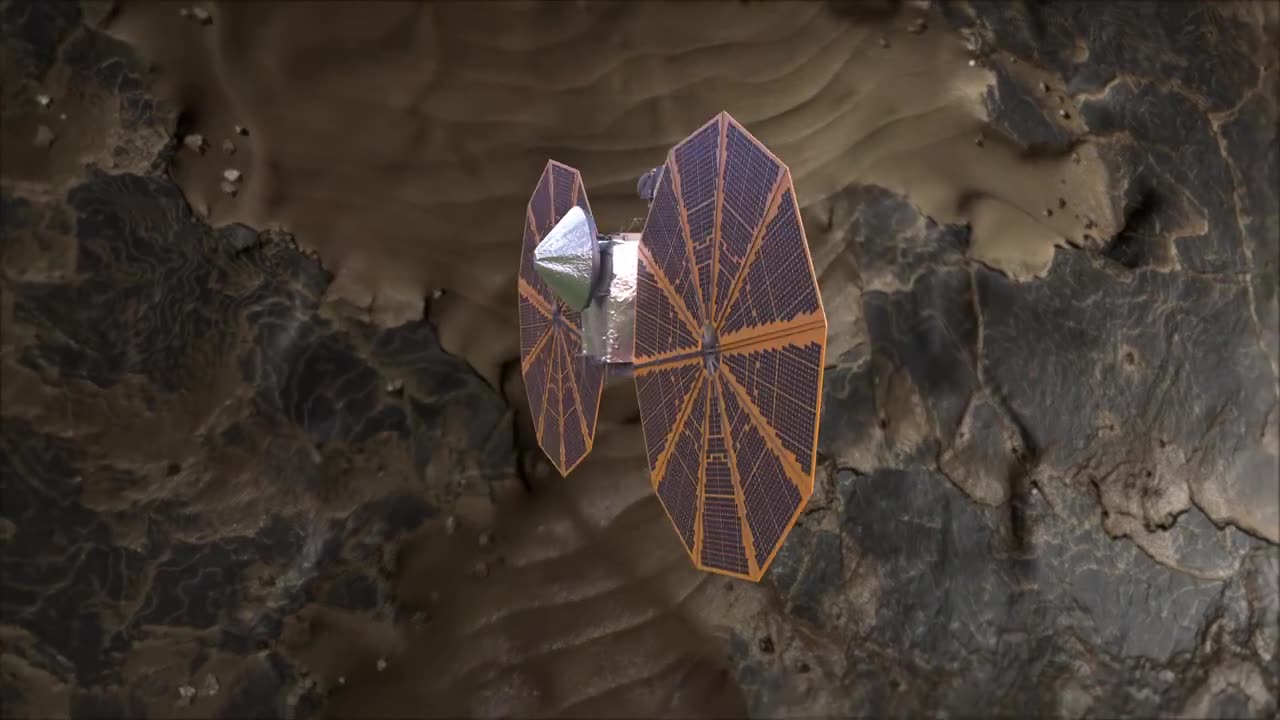Premium Only Content

Lucy Mission Overview: Journey to Explore the Trojan Asteroids
The Lucy mission is a NASA spacecraft mission with the primary objective of exploring the Trojan asteroids, a unique and ancient population of asteroids that share Jupiter's orbit around the Sun. Here's a more detailed overview of the mission's journey and objectives:
1. Mission Goals:
The Lucy mission aims to understand the origins and evolution of our solar system by studying the Trojan asteroids. These asteroids are believed to be remnants from the early solar system and offer valuable insights into its formation.
2. Spacecraft and Instruments:
The Lucy spacecraft is equipped with a suite of sophisticated scientific instruments designed to capture detailed data about the Trojan asteroids.
Its instruments include high-resolution cameras, spectrometers, and a dust analyzer, allowing for the comprehensive study of these celestial bodies.
3. Target Destination:
Lucy's primary target is the Trojan A group of asteroids, which are located ahead of Jupiter in its orbit. This group is of particular interest for scientific study.
The mission will encounter and study a total of seven different Trojan asteroids during its journey.
4. Trajectory and Flybys:
Lucy follows a carefully planned trajectory, which includes gravitational assists from Earth and Jupiter, to reach its target destinations efficiently.
The spacecraft makes use of Earth flybys to gain momentum and change its trajectory to visit multiple Trojan asteroids.
It also performs a flyby of Jupiter, using the giant planet's gravity to further adjust its course.
5. Science Objectives:
The scientific objectives of the Lucy mission include characterizing the geology, surface composition, and physical properties of the Trojan asteroids.
Scientists aim to determine their origins, understand their diversity, and investigate how their orbits have evolved over billions of years.
6. Discovery Potential:
Lucy has the potential to make groundbreaking discoveries about the Trojan asteroids, shedding light on the conditions and processes that shaped the early solar system.
It could also provide insights into the role of Jupiter in influencing the distribution and dynamics of these asteroids.
7. Launch and Duration:
Lucy was launched on October 16, 2021, from Cape Canaveral Space Launch Complex 41, using an Atlas V rocket.
The mission is expected to span approximately 12 years, including its journey to the Trojan asteroids and the scientific observations it will conduct.
8. Collaborative Effort:
The Lucy mission is a collaborative effort led by NASA, with significant contributions from institutions like the Southwest Research Institute (SwRI) and the Goddard Space Flight Center.
9. Legacy and Significance:
Named after the famous fossilized human ancestor "Lucy," the mission symbolizes humanity's quest to uncover ancient secrets about the solar system's history and formation.
-
 LIVE
LIVE
GritsGG
5 hours agoWin Streaking! Most Wins 3390+ 🧠
80 watching -
 LIVE
LIVE
The Charlie Kirk Show
1 hour agoTrump the Unbreakable + The Anti-Abstraction Presidency | Marlow, Morris, Hanson, Nuclear | 8.21.25
3,256 watching -
 2:02:51
2:02:51
Steven Crowder
4 hours agoWoke CNN Host's Meltdown Over Trump Slavery Truth Needs to Be Examined
255K184 -
 19:42
19:42
Law&Crime
22 hours ago $0.48 earnedPraying Florida Teen Pleads Not Guilty After Parents’ Gruesome Murder
8.51K3 -
 4:05:41
4:05:41
JuicyJohns
4 hours ago $1.72 earned🟢#1 REBIRTH PLAYER 10.2+ KD🟢
86.9K1 -
 1:00:50
1:00:50
VINCE
5 hours agoThe Pro-Crime Left Is Officially Finding Out | Episode 108 - 08/21/25
183K228 -
 44:15
44:15
Nikko Ortiz
3 hours agoLive - News, Politics, Podcast And Naaah Im Playin We Chillen
29.8K2 -
 1:56:55
1:56:55
Dear America
5 hours agoLUNATICS Protest DC Crime Being Down 30%?! + FBI Catches A TOP MOST WANTED!!
111K54 -
 2:59:39
2:59:39
Wendy Bell Radio
9 hours agoThe Easy Way Or The Hard Way
77.1K73 -
 2:14:46
2:14:46
Matt Kohrs
15 hours agoBuckle Up! Markets Get Tilted || LIVE! Day Trading Futures & Options
60.6K4